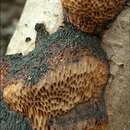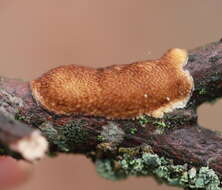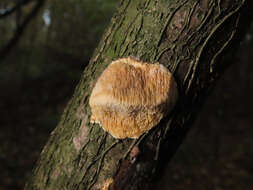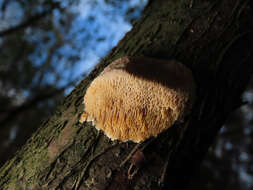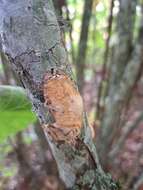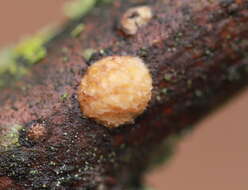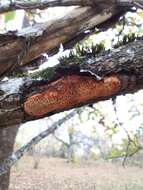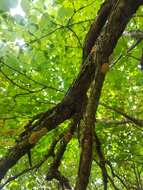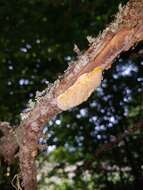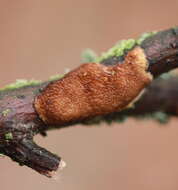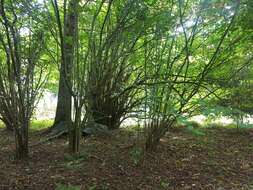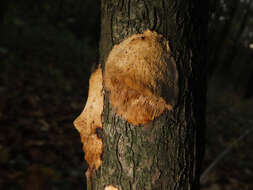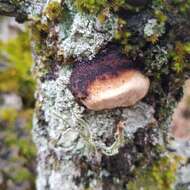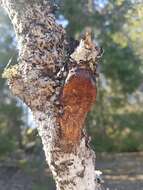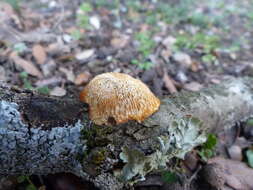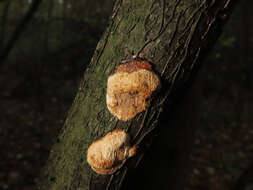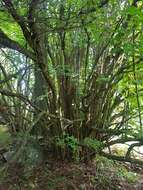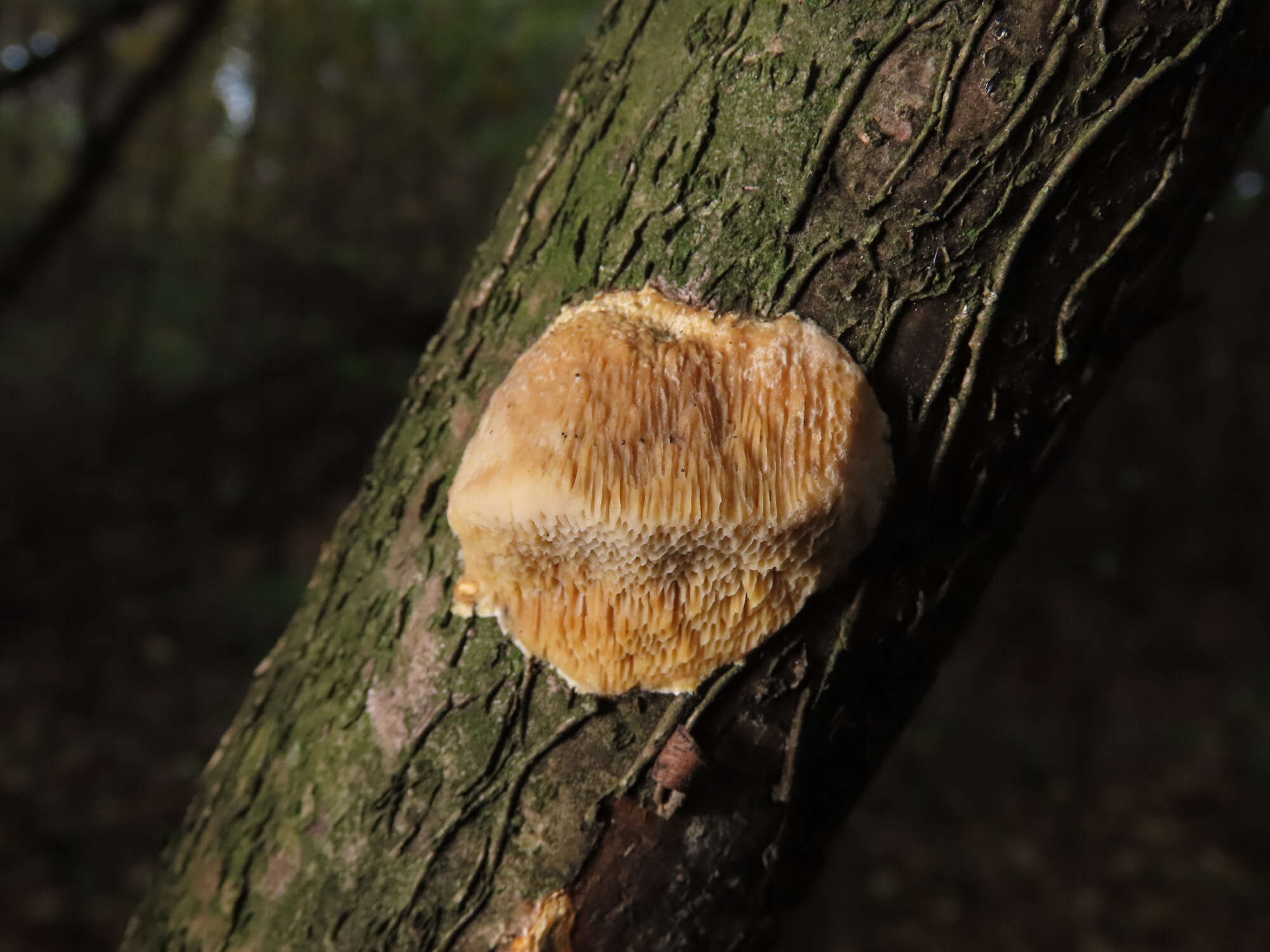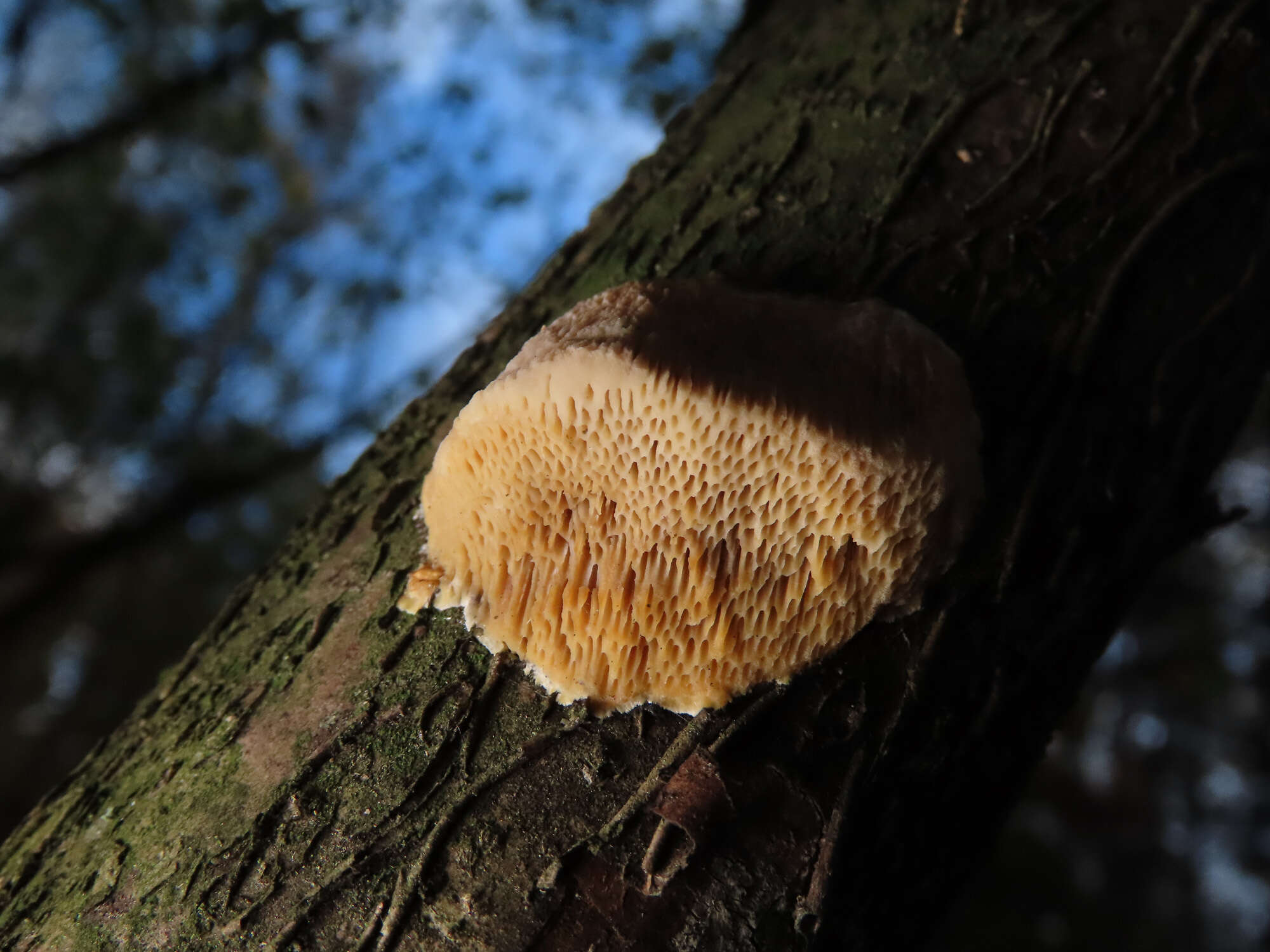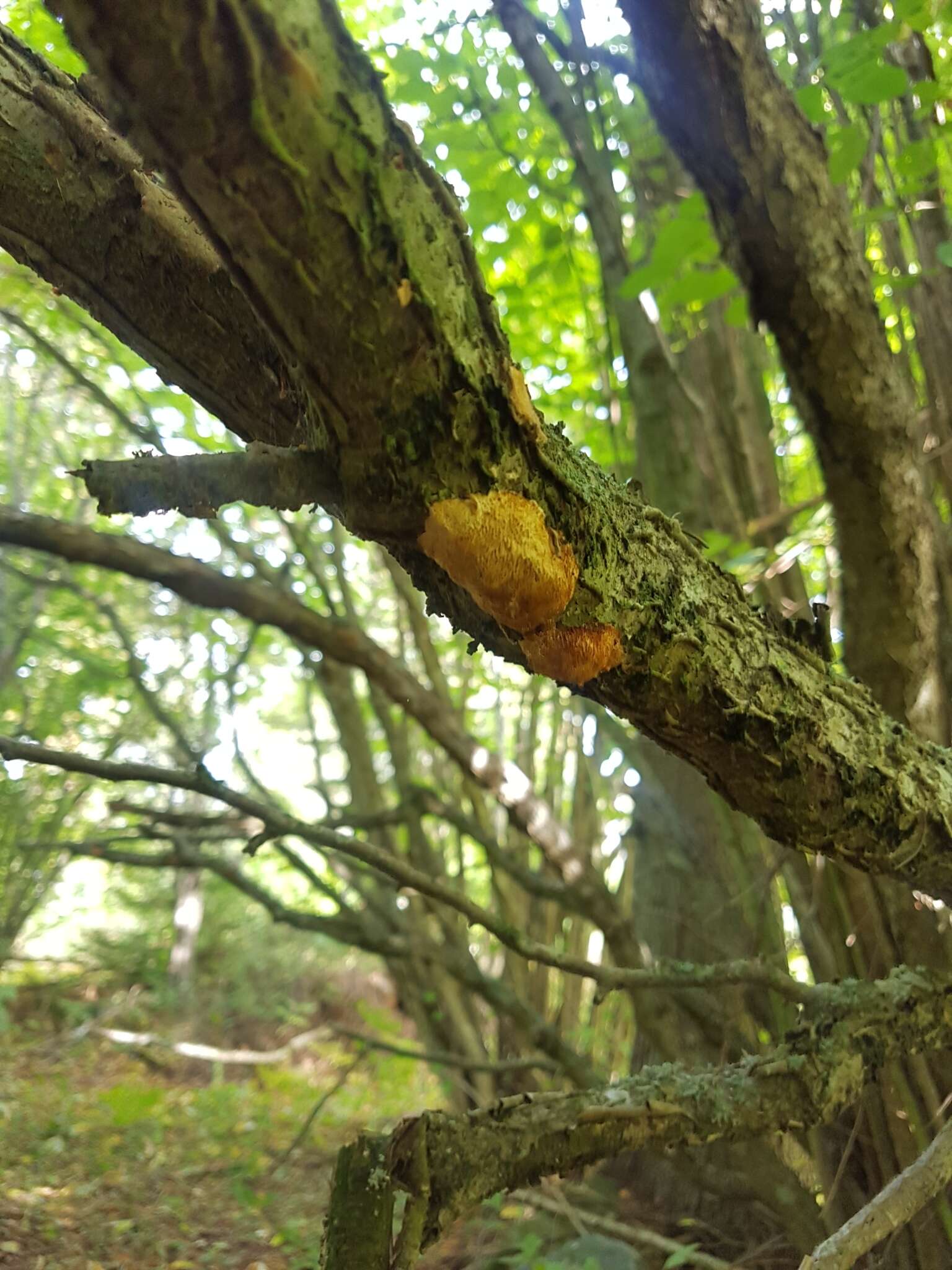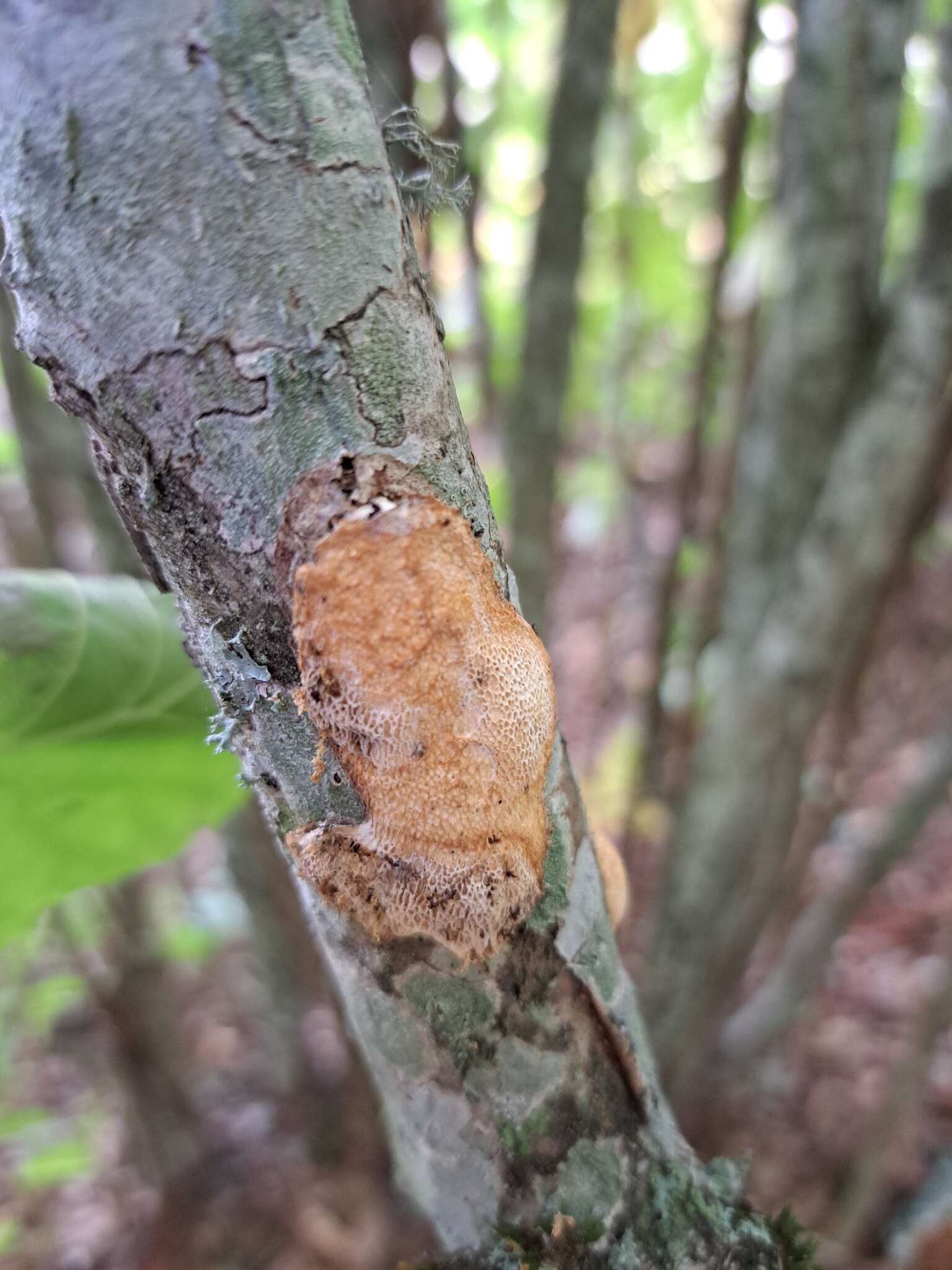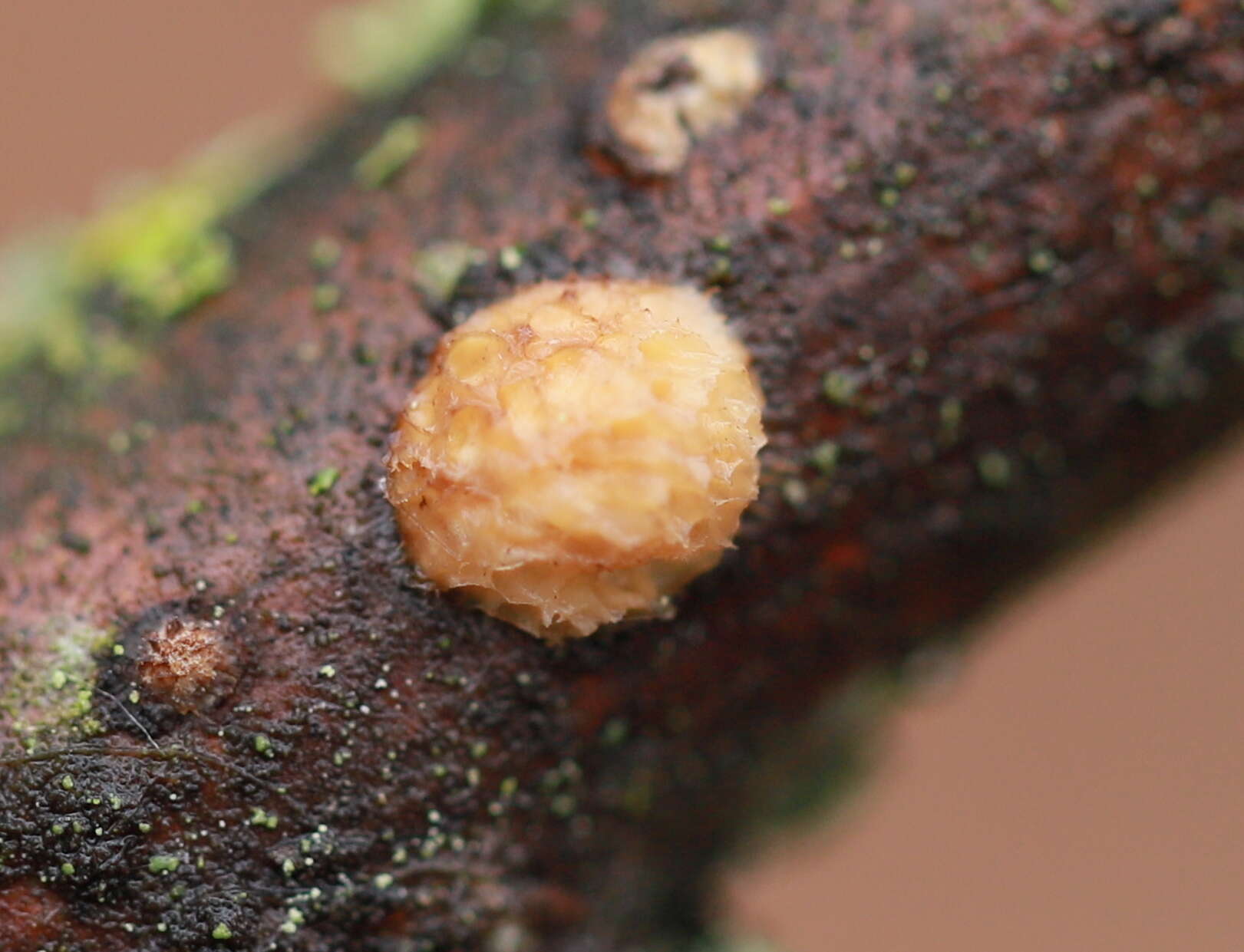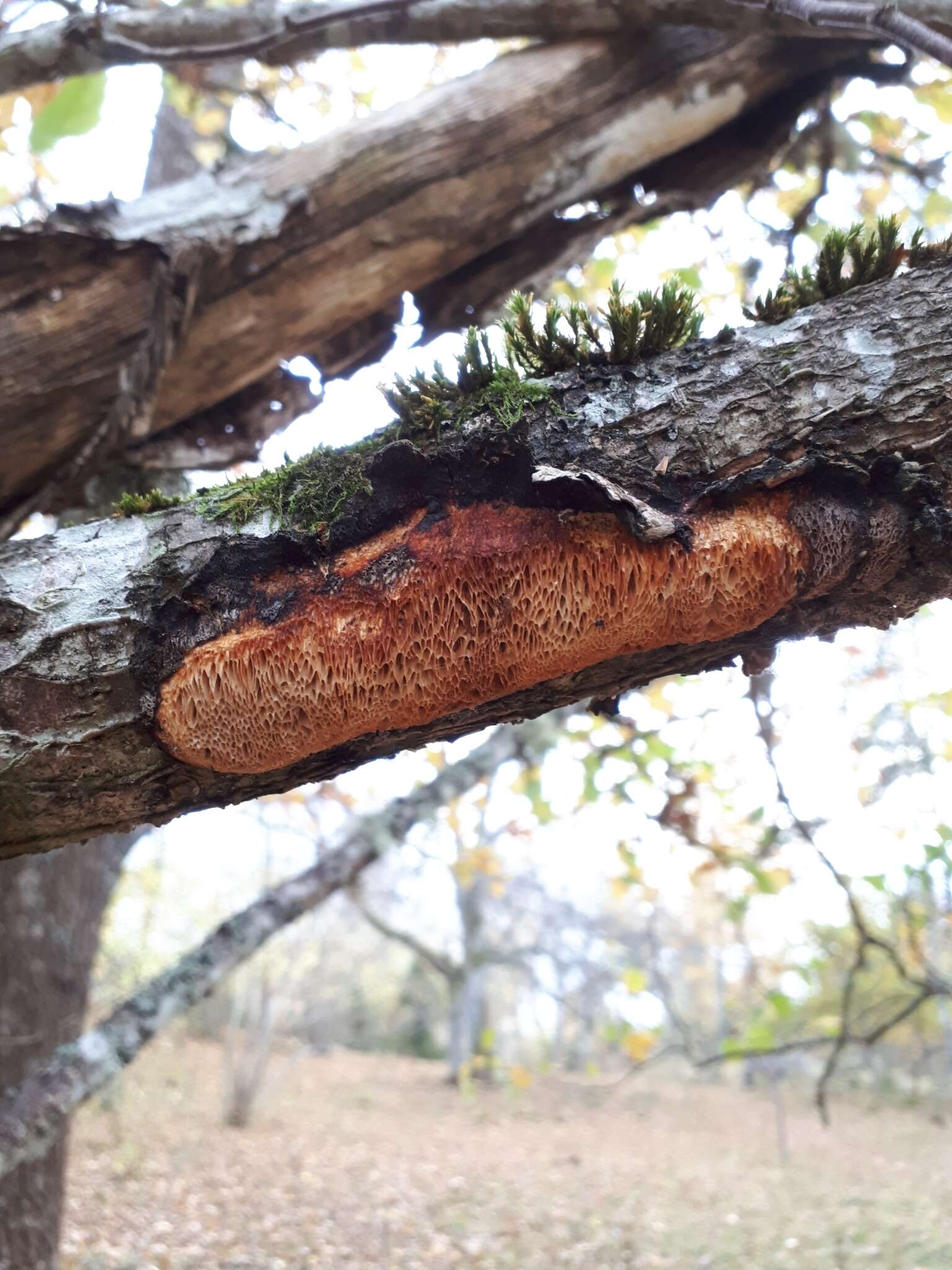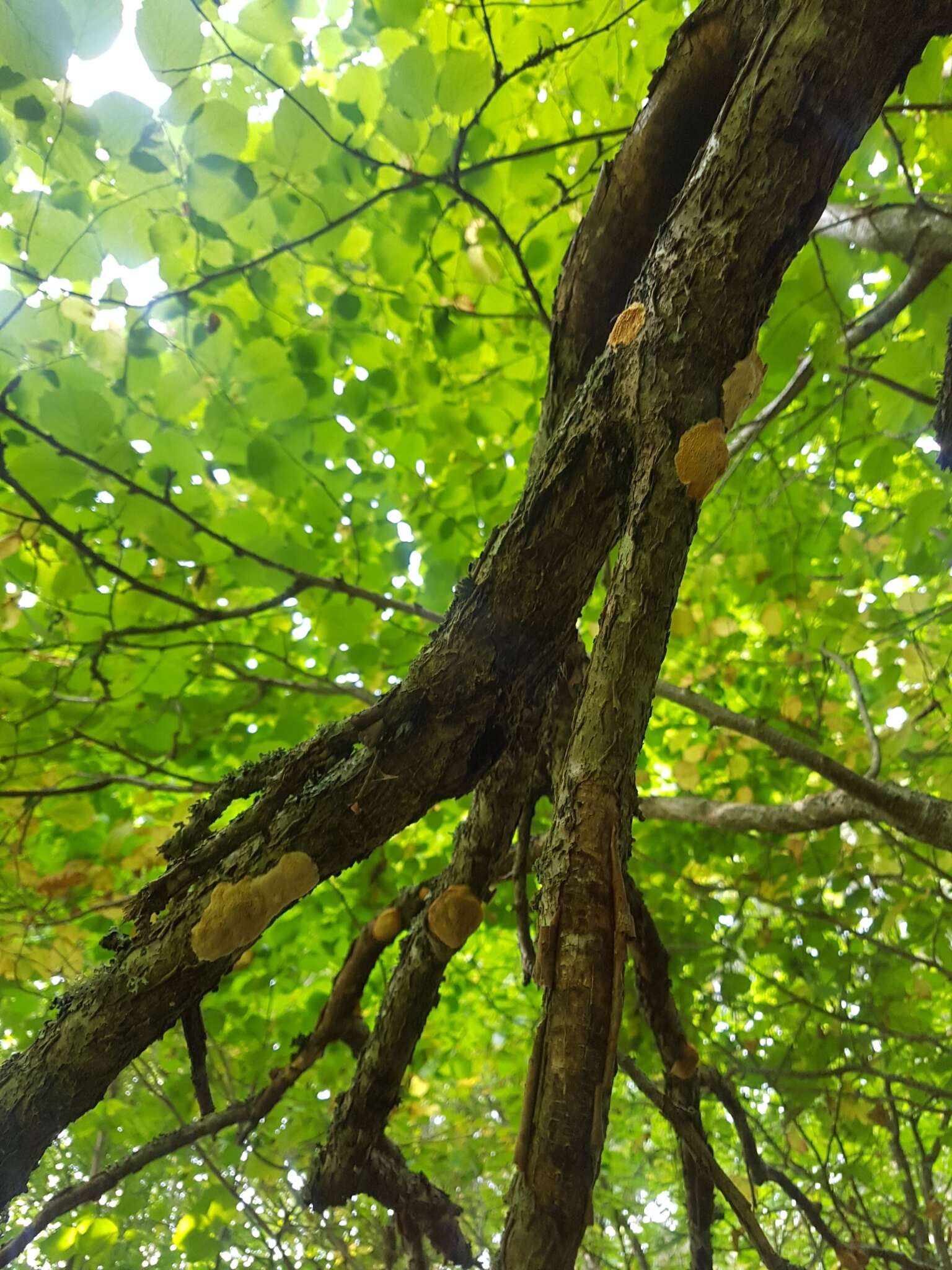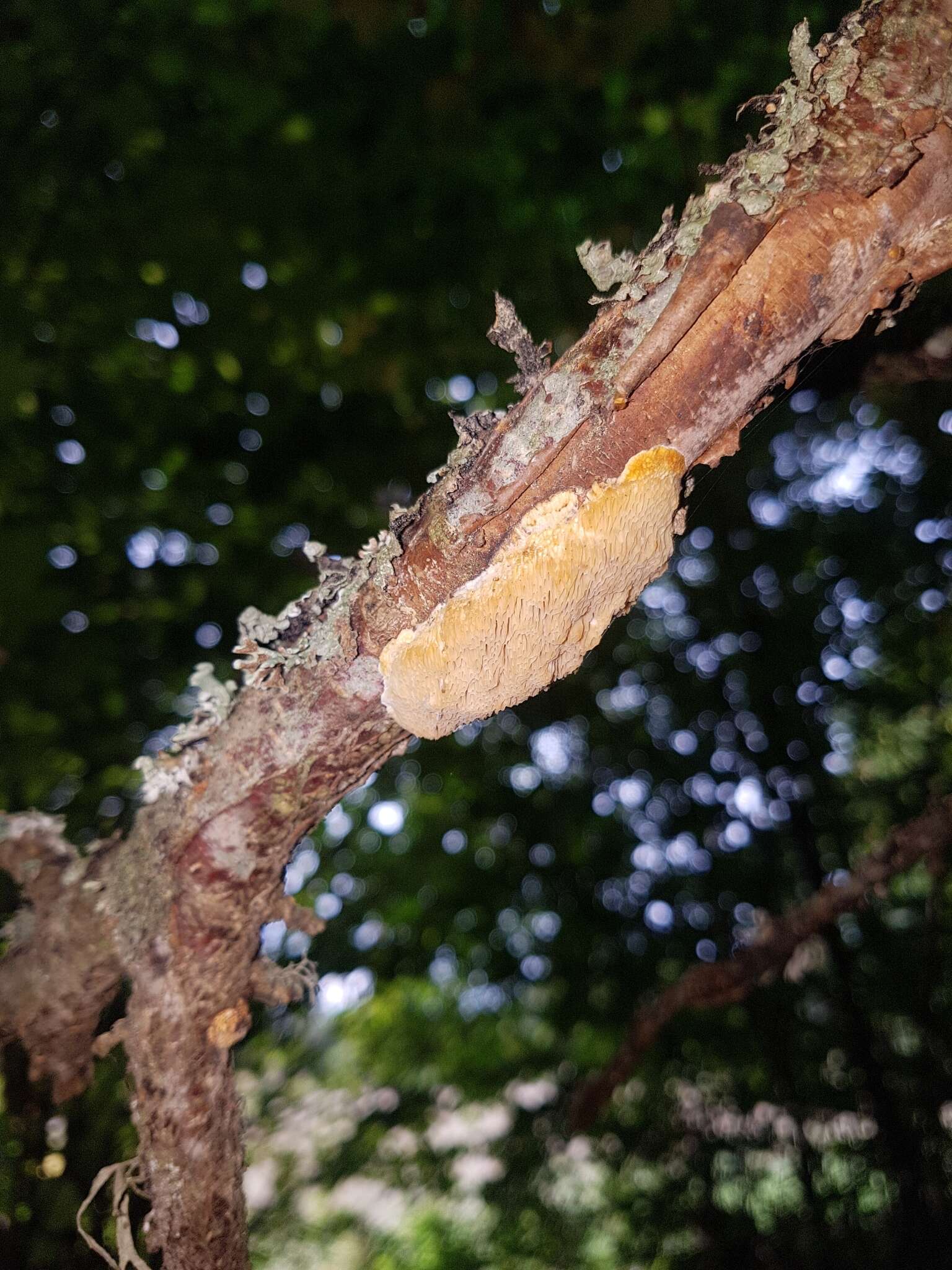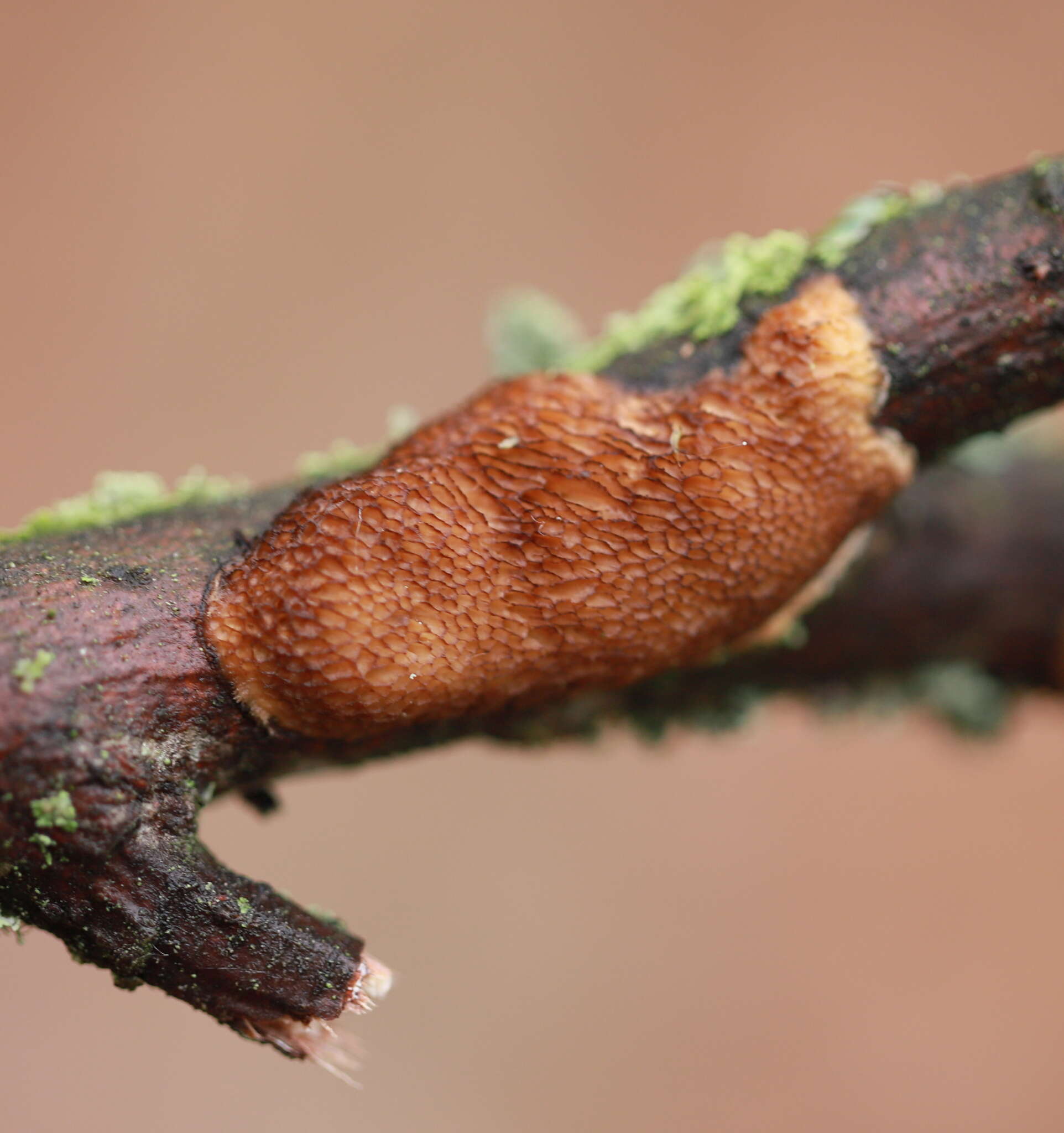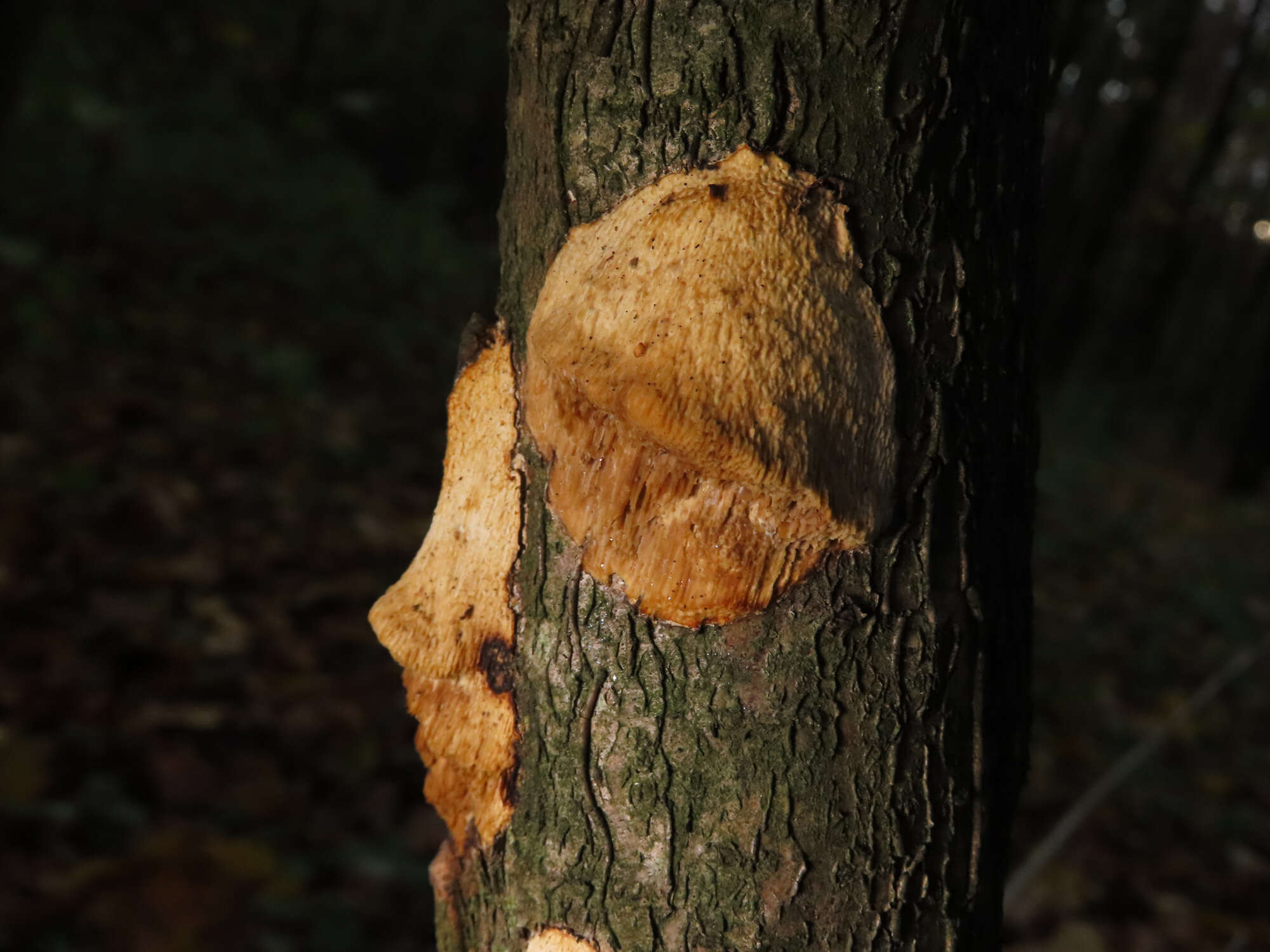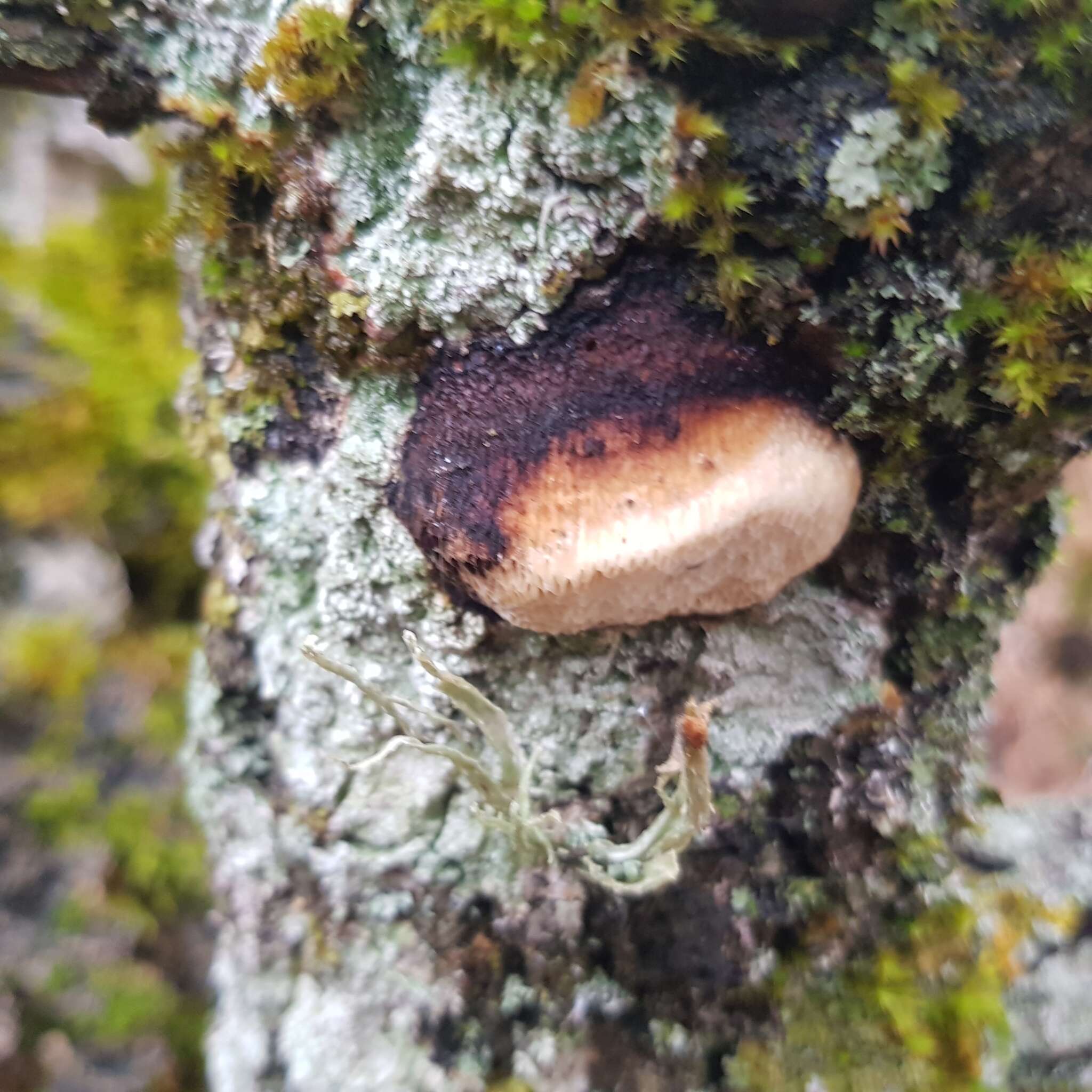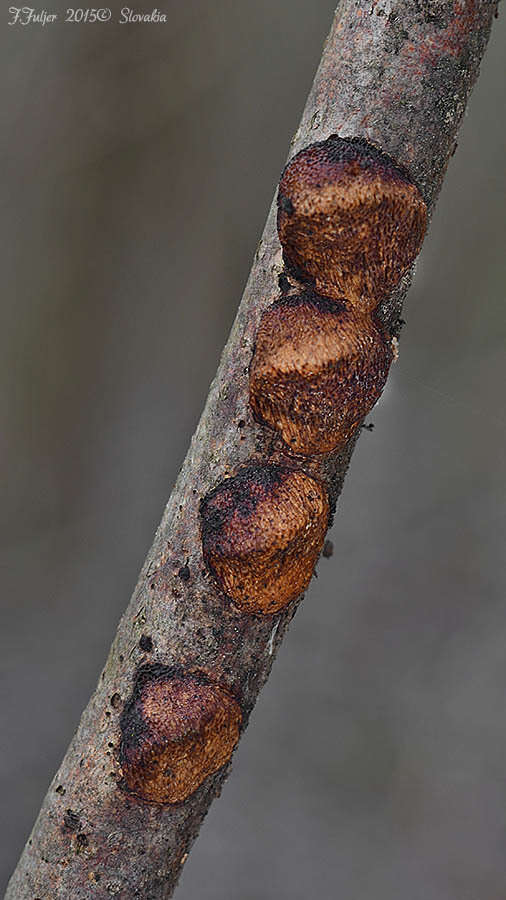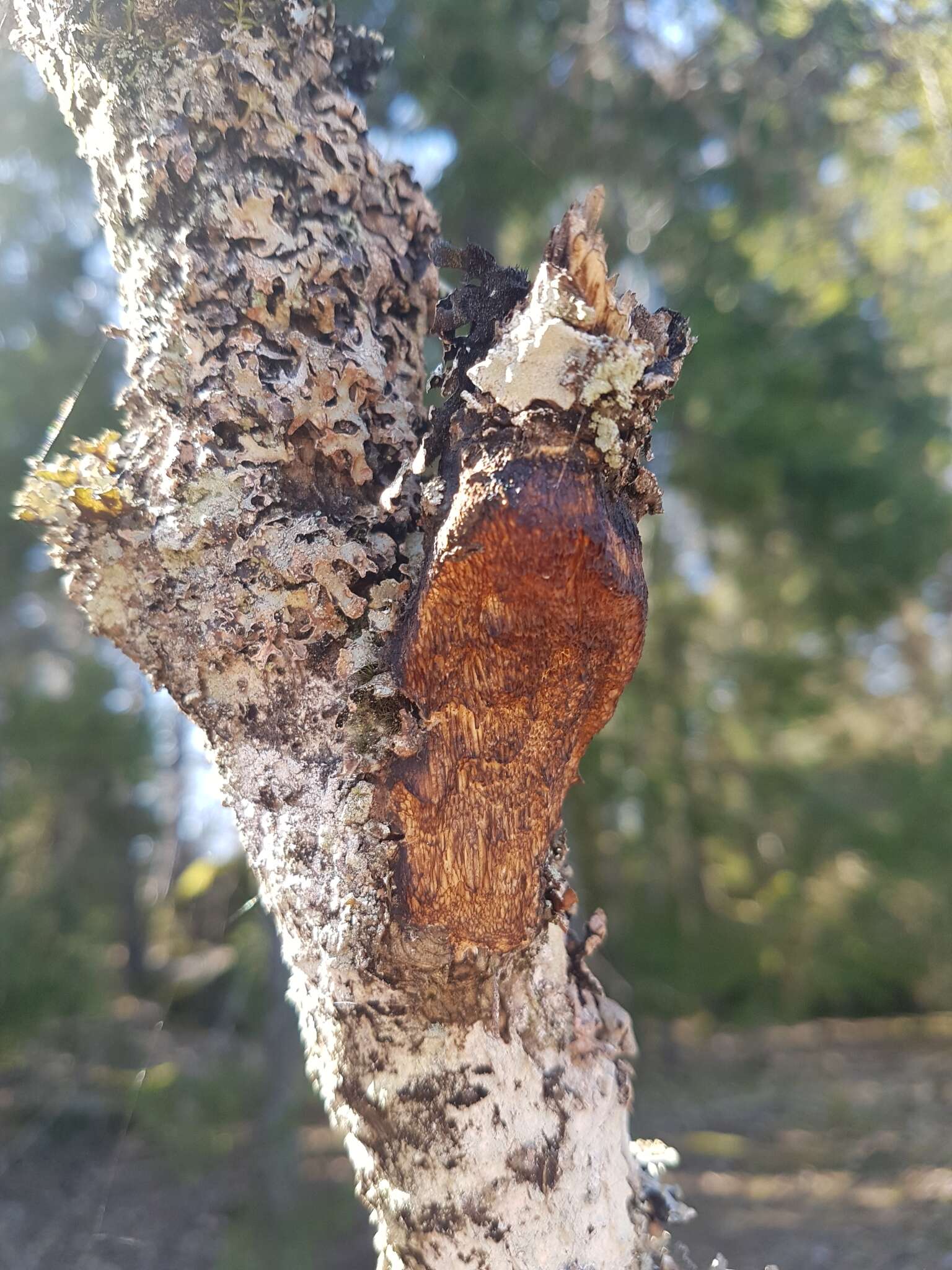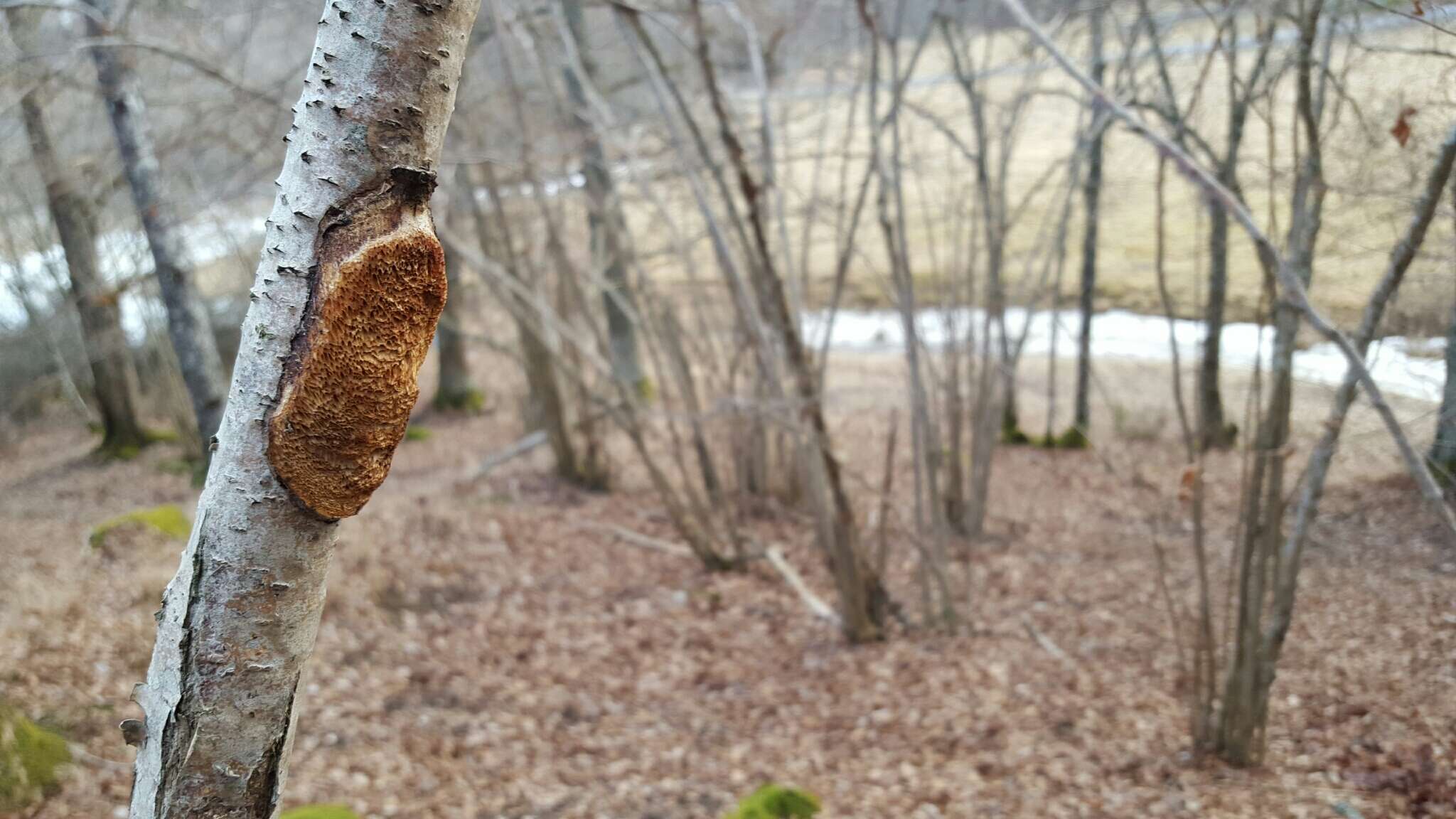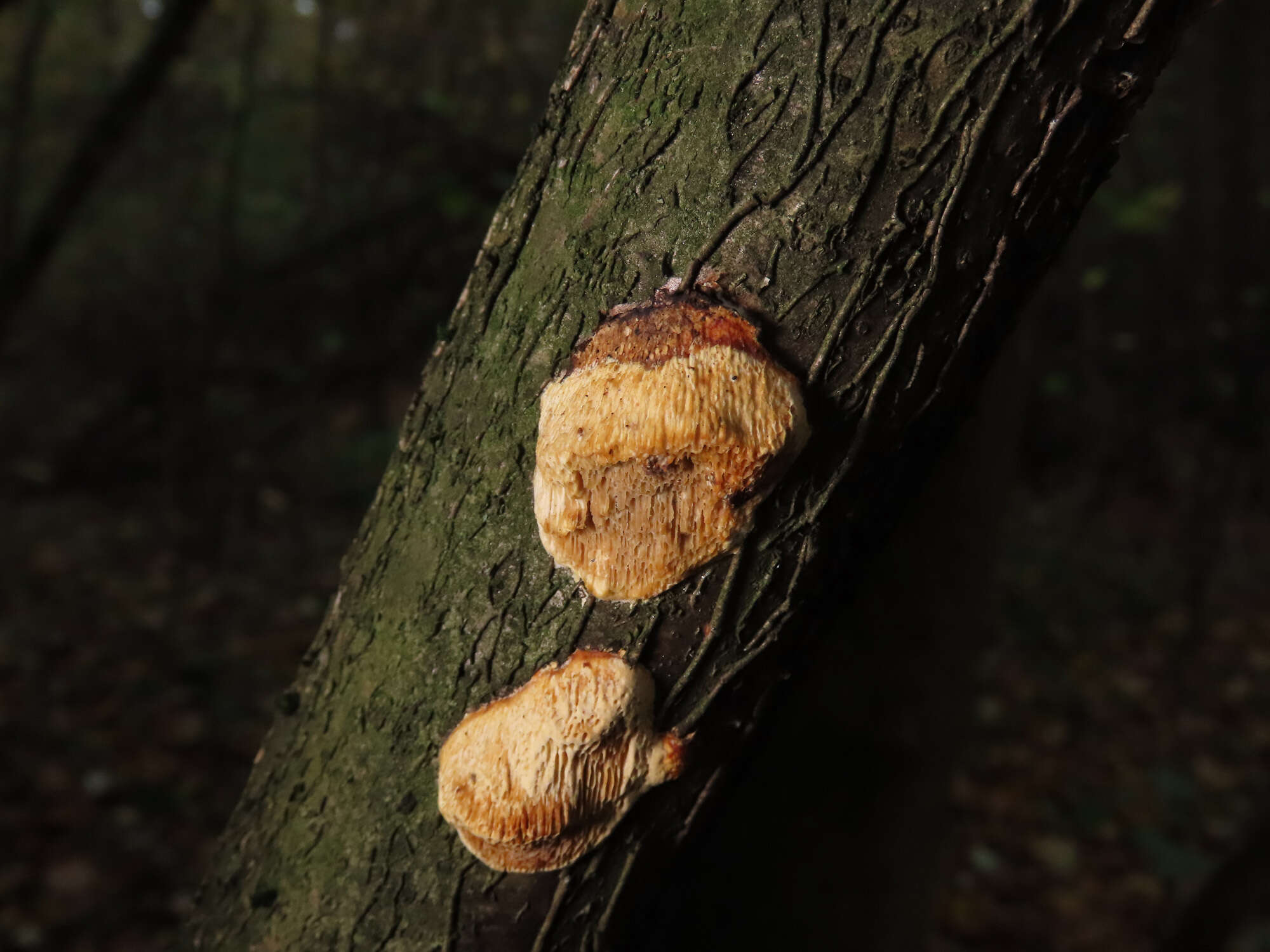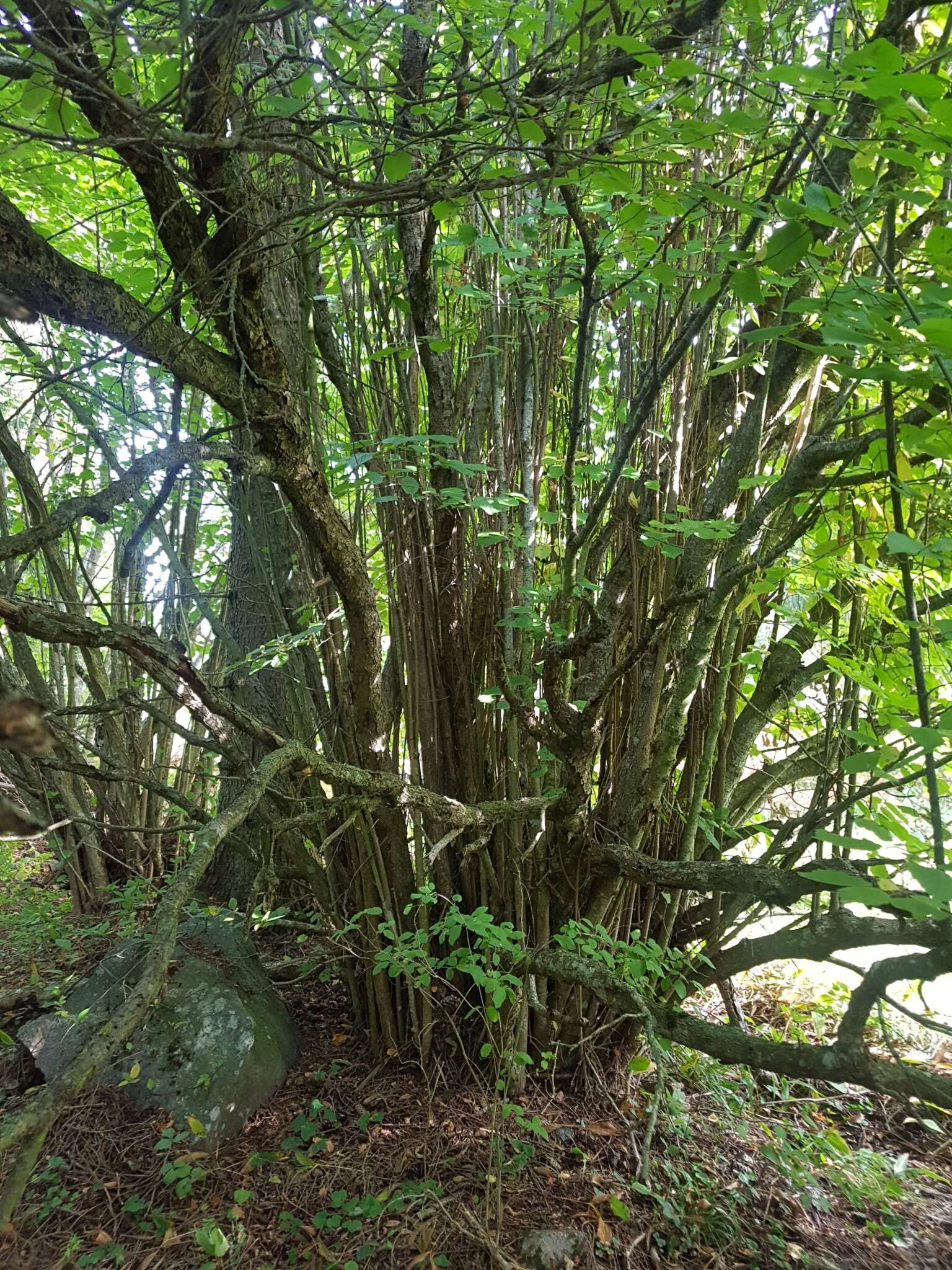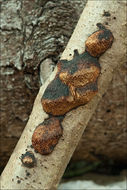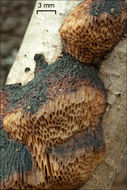-
Mushroom Observer Image 407208: Dichomitus campestris (Quél.) Domański & Orlicz
-

Slo.: hrastov blazinec - Habitat: Light mixed wood edge, Fagus sylvatica, Picea abies, Ostrya carprinifolia, Fraxinus ornus, Corylus avellana dominant; modestly southeast inclined terrain; calcareous ground, overgrown old scree and rocks; relatively dry and warm place; mostly in shade; partly protected from direct rain by tree canopies, average precipitations ~ 3.000 mm/year, average temperature 7-9 deg C, elevation 615 m (2.000 feet), alpine phytogeographical region. - Substratum: still standing dry branch of Corylus avellana still in bark and about 3.5 cm in diameter; sporocarp about 1 m (3 feet) above ground. - Comments: This quite rare Polyporaceae was growing solitary in a form of three 'pilei-like' clumps fused together, all three together measured 6 x 2.5 cm and were max 1 cm thick; flesh hard, brittle, fibrous; smell indistinctive; sporocarps photographed in still moist, apparently alive condition; SP none - I have no good luck regarding spores with this species. KOH 5% on trama chestnut brown, on pores surface weak darkening. - Herbarium: Mycotheca and lichen herbarium (LJU-Li) of Slovenian Forestry Institute, Vena pot 2, Ljubljana, Index Herbariorum LJF - Ref.: (1) L. Ryvarden, R.L. Gilbertson, European Polypores, Fungiflora, Vol.1. (1993), p 238. (2) J. Breitenbach, F. Kraenzlin, Eds., Fungi of Switzerland, Vol.2. Verlag Mykologia (1984), p 282. (3) G.J. Krieglsteiner (Hrsg.), Die Grosspilze Baden-Wrttembergs, Band 1, Ulmer (2000), p 608. (4) R. Phillips, Mushrooms, Macmillan (2006), p 315. (5) A. Bernicchia, Polyporaceae s.l., Edizioni Candusso (2005), p 201. (6) Personal communication with Mr. Bojan Rot, www.gobenabovskem.com
-
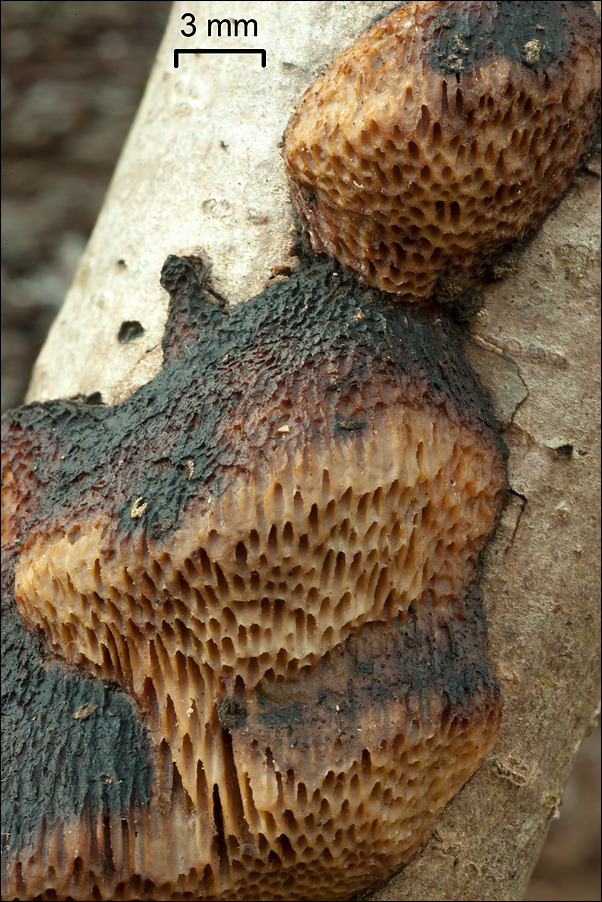
Slo.: hrastov blazinec - Habitat: Light mixed wood edge, Fagus sylvatica, Picea abies, Ostrya carprinifolia, Fraxinus ornus, Corylus avellana dominant; modestly southeast inclined terrain; calcareous ground, overgrown old scree and rocks; relatively dry and warm place; mostly in shade; partly protected from direct rain by tree canopies, average precipitations ~ 3.000 mm/year, average temperature 7-9 deg C, elevation 615 m (2.000 feet), alpine phytogeographical region. - Substratum: still standing dry branch of Corylus avellana still in bark and about 3.5 cm in diameter; sporocarp about 1 m (3 feet) above ground. - Comments: This quite rare Polyporaceae was growing solitary in a form of three 'pilei-like' clumps fused together, all three together measured 6 x 2.5 cm and were max 1 cm thick; flesh hard, brittle, fibrous; smell indistinctive; sporocarps photographed in still moist, apparently alive condition; SP none - I have no good luck regarding spores with this species. KOH 5% on trama chestnut brown, on pores surface weak darkening. - Herbarium: Mycotheca and lichen herbarium (LJU-Li) of Slovenian Forestry Institute, Vena pot 2, Ljubljana, Index Herbariorum LJF - Ref.: (1) L. Ryvarden, R.L. Gilbertson, European Polypores, Fungiflora, Vol.1. (1993), p 238. (2) J. Breitenbach, F. Kraenzlin, Eds., Fungi of Switzerland, Vol.2. Verlag Mykologia (1984), p 282. (3) G.J. Krieglsteiner (Hrsg.), Die Grosspilze Baden-Wrttembergs, Band 1, Ulmer (2000), p 608. (4) R. Phillips, Mushrooms, Macmillan (2006), p 315. (5) A. Bernicchia, Polyporaceae s.l., Edizioni Candusso (2005), p 201. (6) Personal communication with Mr. Bojan Rot, www.gobenabovskem.com
-
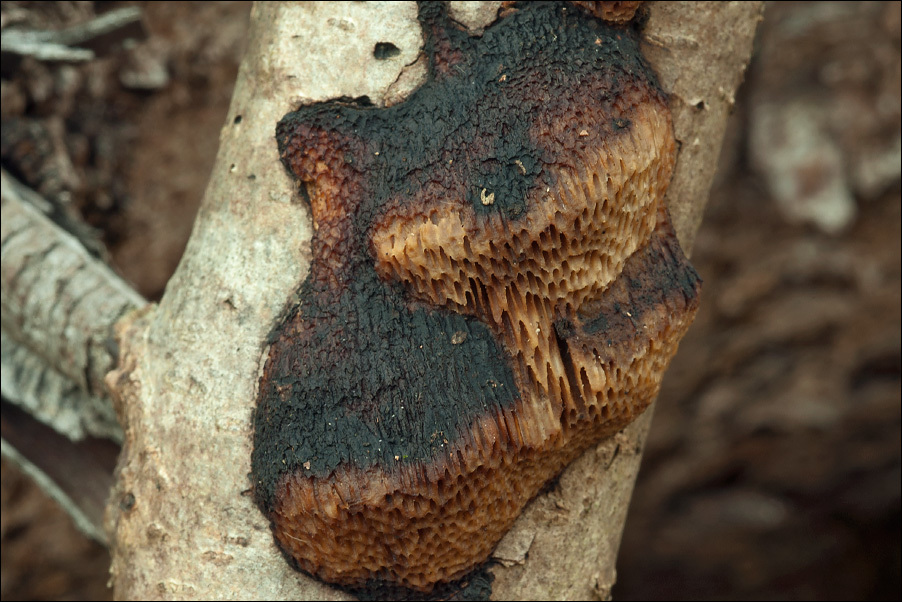
Slo.: hrastov blazinec - Habitat: Light mixed wood edge, Fagus sylvatica, Picea abies, Ostrya carprinifolia, Fraxinus ornus, Corylus avellana dominant; modestly southeast inclined terrain; calcareous ground, overgrown old scree and rocks; relatively dry and warm place; mostly in shade; partly protected from direct rain by tree canopies, average precipitations ~ 3.000 mm/year, average temperature 7-9 deg C, elevation 615 m (2.000 feet), alpine phytogeographical region. - Substratum: still standing dry branch of Corylus avellana still in bark and about 3.5 cm in diameter; sporocarp about 1 m (3 feet) above ground. - Comments: This quite rare Polyporaceae was growing solitary in a form of three 'pilei-like' clumps fused together, all three together measured 6 x 2.5 cm and were max 1 cm thick; flesh hard, brittle, fibrous; smell indistinctive; sporocarps photographed in still moist, apparently alive condition; SP none - I have no good luck regarding spores with this species. KOH 5% on trama chestnut brown, on pores surface weak darkening. - Herbarium: Mycotheca and lichen herbarium (LJU-Li) of Slovenian Forestry Institute, Vena pot 2, Ljubljana, Index Herbariorum LJF - Ref.: (1) L. Ryvarden, R.L. Gilbertson, European Polypores, Fungiflora, Vol.1. (1993), p 238. (2) J. Breitenbach, F. Kraenzlin, Eds., Fungi of Switzerland, Vol.2. Verlag Mykologia (1984), p 282. (3) G.J. Krieglsteiner (Hrsg.), Die Grosspilze Baden-Wrttembergs, Band 1, Ulmer (2000), p 608. (4) R. Phillips, Mushrooms, Macmillan (2006), p 315. (5) A. Bernicchia, Polyporaceae s.l., Edizioni Candusso (2005), p 201. (6) Personal communication with Mr. Bojan Rot, www.gobenabovskem.com
-
-
-
-
-
-
-
-
-
-
-
-
-
-
-
-
-
-
-
-

